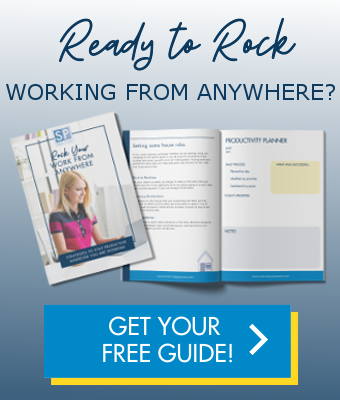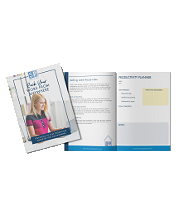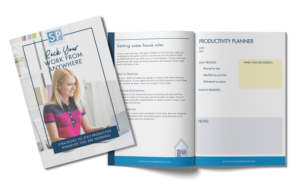
Many people fear adding structure and routine to their lives because they worry it will hamper their ability to be spontaneous, to be creative or to be ready for whatever the day presents. This really couldn’t be further from the truth. The truth is: Implementing structure and routine into your day relives stress, saves time and frees up time and energy so you can be spontaneous.
Structure and routine are not dictators for your time and attention. Rather they are support systems that facilitate and ease the effort of getting things done or keeping projects and tasks on track. When thought of in this context daily, weekly or monthly organizational routines help take away stress and worry about dropping the ball or getting behind. When you’re not worried about these things you have physical and mental energy to be spontaneous. When you plan your time and manage your focus with routine systems you waste less time spinning your wheels and trying to figure out what needs to be done. The time you save is yours to use in a spontaneous way.
Here are ways you can implement structure and routine into your life so you can enjoy being spontaneous.
- Choose one task and establish a routine for getting it done. Ask yourself, “What one small thing could I do that, if done regularly, will make life easier?” This could be putting important things away so you can find them easily like your keys, managing incoming mail or email, doing laundry, grocery shopping or cleaning up your workspace. It is often these seemingly small tasks that when left undone create the most stress and disorganized disfunction. Identify one task that when done regularly will make your life better.
- Figure out how to do this task routinely. Don’t over-complicate it. Think about how you move through your day and see if there are any routines you already have in place (Maybe you hadn’t noticed them before.) that you can tie a new routine to. For example, if you already come into you home and drop things on the kitchen counter, place a container there for your keys. Put your keys in the container every time you come into the house. You won’t worry about or waste time finding your keys again. If your task is bill paying, plan that time on your calendar. Make it an appointment for yourself. Treat that time like a regular meeting and during that time pay your bills. If something comes up and you can’t get to it, like a meeting, reschedule.
- Create reminders to help you stick to your routine. Cues help people redirect their focus and remember what needs to be done. Building on the examples given above, if you’re establishing a new routine for consistently putting your keys away in the same place, you might consider placing a visual reminder in the form of a sticky note at the door where you come into the house. If the new routine is to regularly pay your bills, add a notification (visual and/or audible) to your calendar.
Try a new routine for at least a week before you make adjustments. After the first week, make adjustments to the timing or cueing of the routine. Keep trying and adjusting as needed. After you’ve successfully maintained a routine for completing one task for two weeks, go through the same process to identify another task that when done regularly will have a positive and significant impact on your life. Rely on the structure and routine of doing these small, high impact tasks to reduce stress and free up time and energy so you can be prepared to respond spontaneously to other things that emerge in your life.






